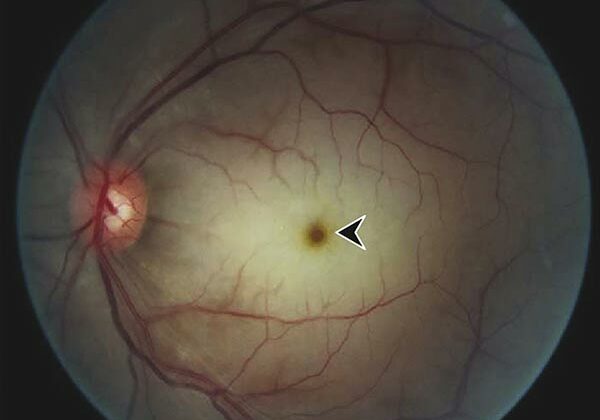News Nasal microbiome: depriving multi-resistant bugs of iron
Whether dangerous staphylococci survive in the nose depends on what other bacteria are present – and how they obtain iron.
A research team led by Simon Heilbronner, Professor of Microbiology at LMU’s Biocenter, has investigated how various bacteria that colonize the nasal cavity deal with the lack of iron there and interact with each other. The study was recently published in The ISME Journal, and the results show that the composition of the microbiome influences how well multi-resistant staphylococci can thrive in the nose. This opens avenues for the targeted suppression of potentially dangerous germs via nasal probiotics, without the need for antibiotics.
We share our body with countless microorganisms. They inhabit our gut, our skin, and body orifices such as our mouth and nose. The composition of this microbiome has a major influence on our health. While certain germs can be useful, others harm us. Staphylococcus aureus falls into the latter category: “Antibiotic-resistant staphylococci can hide unnoticed in the microbiome of healthy people,” explains Simon Heilbronner. This is the case for one third of all humans. As long as the bacteria stay in the nose, we do not notice them. But if they reach our blood stream – after surgery, for example – they can cause serious illnesses. These infections are acutely life-threatening, and the bacteria are developing resistance even to antibiotics of last resort. Multi-resistant hospital bugs are increasingly problematic and develop into a global health crisis. Ensuring that dangerous pathogens are not living in a patient’s nose prior to admission to hospital can save lives.
Nasal habitat
The reason why Staphylococcus aureus occurs in some noses and not others has remained largely obscure. “We know surprisingly little about the factors that determine whether a person can be inhabited by S. aureus,” says Heilbronner. The genetics of the host and environmental conditions have only a moderate influence. “By contrast, it’s becoming increasingly clear that the presence of certain other bacteria can help or hinder the growth of the pathogen.” Because of the lack of research into the microbial ecosystem of the nose in general, scientists still know far too little to sufficiently understand the underlying mechanisms.
For the new study, Heilbronner and his colleagues investigated 94 strains from 11 bacteria genera that occur in the human nose. Their focus was on a very specific characteristic of the microbes. “There is an acute shortage of iron in the nose,” says Heilbronner. By limiting this essential nutrient, the human immune system protects itself against unwanted guests. And so, bacteria that want to survive in the nose need a strategy: They produce so-called siderophores – iron-binding molecules which they release into their environment. “You can picture them as molecular nets which the bacteria cast out to catch iron,” suggests the infectious disease biologist. As soon as the siderophores have enriched themselves with the coveted trace element, they are reabsorbed – albeit not always by the same bacterium that produced them.
The battle for iron
As the researchers discovered, our noses are the site of a complex network of iron-related trading alliances and hostile raids. They identified various forms of interactions between the bacteria they studied. Some of the microorganisms share their siderophores, and the iron bound to them, with S. aureus. One can say, they cooperate with the pathogen to the mutual benefit of both. In contrast, the behavior of other bacteria is less social. There are species that help themselves to the siderophores of S. aureus, but use molecule encryption to protect their own siderophores against usage by the pathogen. The authors refer to this strategy as “locking away” iron. And there are the pirates among the nasal bugs, which do not produce any siderophores of their own – because they are costly to make – but exclusively plunder external sources produced by others. Many of these “raiders” are specialized in the siderophores of the pathogen.
Heilbronner and his team were able to demonstrate that the growth of S. aureus is inhibited if there are bacteria in the environment that plunder its siderophores without giving anything back in return. “In this work, we identified several strains of various species and genera that interact with S. aureus in different ways,” observes Heilbronner. “The results indicate that neighboring bacteria can create a hostile environment for staphylococci by stealing the pathogen’s iron.” This paves the way for the development of nasal probiotics for suppressing multi-resistant staphylococci in the nose. The siderophore pirates could thus become privateers in the service of medicine, tasked with plundering the iron of S. aureus in order to arrest its spread.
https://www.lmu.de/en/newsroom/news-overview/news/nasal-microbiome-depriving-multi-resistant-bugs-of-iron.html
Full bibliographic information
Published on 07/08/2024 by Ludwig-Maximilians-Universitaet Muenchen (LMU)
By: Yanfeng Zhao, Alina Bitzer, Jeffrey John Power, Darya Belikova, Benjamin Orlando Torres Salazar, Lea Antje Adolf, David Leon Gerlach, Bernhard Krismer & Simon Heilbronner:
About: Nasal commensals reduce Staphylococcus aureus proliferation by restricting siderophore availability. The ISME-Journal 2024
Link: https://academic.oup.com/ismej/article/18/1/wrae123/7710803?login=false





